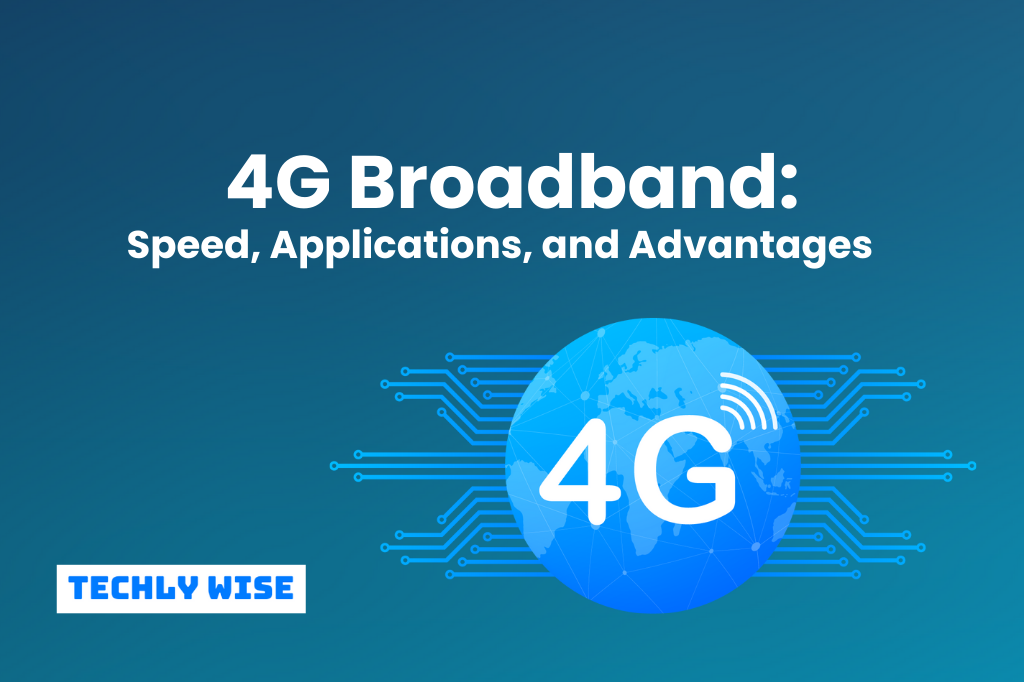
The fourth generation of broadband cellular network technology, known as 4G, came out before 5G and after 3G. The ITU stipulates that a 4G system must provide the features listed in IMT Advanced.
Applications that are now in use or that have the potential to be used include modified mobile online access, IP telephony, gaming services, video conferencing, high-definition mobile TV, and 3D television.
The ITU did, however, broaden the definition of 4G in December 2010 to include Long Term Evolution (LTE), Evolved High-Speed Packet Access (HSPA+), and Worldwide Interoperability for Microwave Access (WiMAX). In South Korea, the first commercial WiMAX deployment occurred in 2006, and since then, much of the world has adopted the WiMAX standard.
In 2009, the Norway, Oslo, and Sweden, Stockholm, commercial deployments of the first-release LTE standard took place. Since then, most of the world has adopted this standard. The original releases’ 4G status has been questioned, though.
The International Telecommunication Union (ITU), which also defines its essential elements, such as data speed and transmission techniques, created the 4G wireless cellular standard. With each generation of wireless cellular technologies, bandwidth speeds, and network capacity have increased.
While 3G has a peak speed of 7.2 Mbit/s download and 2 Mbit/s upload, 4G boasts speeds of up to 150 Mbit/s download and 50 Mbit/s upload.
Advantages of 4G Broadband
A revolution rather than an evolution marked the transition from 3G to 4G broadband. The speed and dependability differences are significant, and 4g opens up a world of possibilities that simply weren’t possible previously. Now is the perfect moment to switch to 4g home broadband, if you haven’t already.
Speed
The speed of 4g broadband is by far its most noticeable benefit. This area sees a significant increase from 3g to 4g. The theoretical maximum download speed of basic 3g internet was 7.2 Mbps, whereas the prospective maximum download speed of advanced 4g is an amazing 300Mbps. The average download speed for 4G is 42Mbps, which is 14 times higher than the average download speed for 3G (3Mbps), even though it is virtually impossible to reach these theoretical rates in the actual world.
Mobile Internet
In contrast to 3g routers, which need continual recharging, a 4g broadband router is portable and gives you access to dependable, high-speed internet wherever you are.
Streaming and Gameplay
A considerably quicker response from the server is necessary for some tasks. On the 3G internet, trying to stream video or play games can be a misery due to constant lagging that ruins the experience. You can game and stream to your heart’s delight with ultrafast 4g.
No Phone Line is Necessary
Landlines are becoming outdated as more people use mobile phones. With the introduction of 3g, many customers learned that they had to install an extra landline to use their home internet. By using the same mobile internet as your smartphone, 4g makes this obsolete.
Amazing Offers
Much less expensive than you may expect is 4G mobile broadband. We have affordable packages and home internet offers for all of our customers. To take the plunge, get in touch right away.
What is 4g Broadband in Detail?
Simply said, 4G broadband accesses the internet via mobile phone signals rather than the usual cables and phone lines. The fourth generation of mobile technology, or 4G, replaces the outmoded and sluggish 2G and 3G networks.
In light of this, you might be asking how 4G Home broadband differs from 4G Mobile. First off, you will have a router of your own with more powerful hardware than a smartphone. Additionally, 4G broadband can connect up to 80 devices to the internet.
The fact that 4G broadband often offers substantially bigger, more liberal data caps than mobile broadband is another important differentiator. This implies that your data consumption has few or no restrictions.
Perhaps you’re also wondering if 4G broadband is offered in your neighborhood. In the UK, 4G broadband is readily accessible and gaining popularity. Currently, the service is accessible to almost 99% of all homes and companies in the UK.
However, it’s crucial to confirm that you are unquestionably within range. To do this, simply input your postcode into a broadband coverage checker. Let’s now take a closer look at a few of the advantages.
How Does 4G Function?
A 4G connection, in its most basic form, enables mobile devices to connect to mobile networks via an antenna that transmits over radio frequencies.
Orthogonal Frequency Division Multiplexing (OFDM) and MIMO technologies enable the transmission and reception capabilities of 4G. In comparison to 3G, MIMO, and OFDM both provide for increased capacity and bandwidth. The main 3G technologies, CDMA (Code Division Multiple Access) and TDMA (Time Division Multiple Access) are outperformed in terms of speed by OFDMS since MIMO can support more users, and compared to 3G, 4G has reduced network congestion.
4G is an IP-based standard that supports both speech and data, in contrast to 3G, which only supports IP for data while enabling voice on a circuit-switched network. 4G is easier for mobile network carriers to manage as an all-IP network than maintaining various network technologies for voice and data.
What Makes 4G And 4G LTE Different From One Another?
Marketing and the 4G specification’s development are the only factors distinguishing 4G from 4G LTE. Long Term Evolution (LTE) was initially created to help carriers make the switch from 3G to 4G.
The ITU first outlined 4G in 2008, but mobile networks and devices were not yet capable of their speeds and technological requirements. LTE offers higher bandwidth than 3G as a temporary step up while falling short of the full bandwidth network speed requirement of 100 Mbps that 4G promises.
LTE is a marketing phrase that is frequently used but does not identify or suggest a particular speed. The speed ranges from 20 Mbps to 100 Mbps, depending on the provider. However, 4G LTE-A (LTE-Advanced) is a distinct category that is described as supporting 100 Mbps. Technically speaking, there is no difference between it and 4G.
What Speed is 4G?
While 3G only actually made it possible to access maps, emails, and Facebook, the emergence of new technologies like video calling and HD streaming has necessitated a speedier alternative. The vast majority of things you can do at home, including placing Skype calls, viewing YouTube, and downloading music, will be possible with 4G.
The most populated portions of the UK would likely have the fastest speeds, with outlying areas of the country possibly experiencing a lesser impact.
The average 4G speed in five major cities, according to a recent OFCOM survey, was 15.1 Mbit/s. This indicates that, inside the test cities, 4G speeds were, on average, 2.5 times quicker than the 6.1Mbit/s of the average 3G speeds.
Edinburgh had the greatest average download speed among all the cities tested for both 4G and 3G, with half of the 4G download speeds in the 5 cities being above 16Mbit/s across all of the networks.
The usage of significant urban regions in the OFCOM test results in various flaws, although it offers insightful information about the issue of how quickly 4G truly operates. It does not accurately reflect the experience that the majority of UK users would have outside of these regions. However, when 4G service spreads, we can all anticipate experiencing speeds in this typical range.




